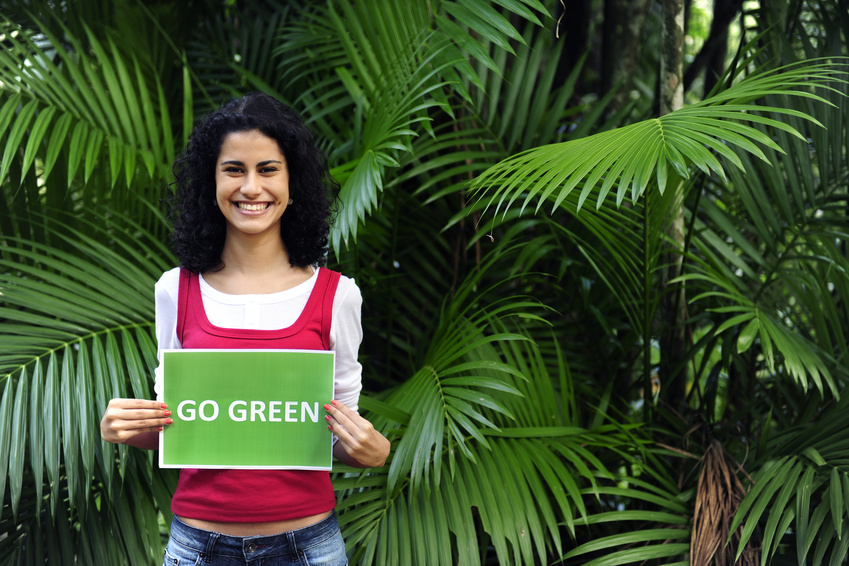Teens Turning Green is a student led movement that educates and advocates for environmentally and socially responsible choices. About a year ago this amazing group of teenagers went head to head with the giant retailer, Abercrombie & Fitch [2]. They were outraged that A & F was mandating their teen employees wear a fragrance containing phthalates, linked to asthma, allergies and hormone disruption.
Teens Turning Green are back in the spotlight again. This month, from October 1- October 30, they are working to inspire the next generation to change “from conventional to conscious” via a 30-day green lifestyle challenge. Every day during the month of October a new green challenge is posted on the Project Green Challenge [3] site. There are all sorts of incentives ranging from a Green Diploma to becoming a Challenge Champion. It’s their hope that the participants will discover how fun, easy and effective eco living can be.
I’m not delusional-I know I’m not a teen. But I am dedicated to going green one small step at a time [4]. So I thought I would join in the fun and check out the challenges (I’ve also been trying out the challenges [5] for Change the World Wednesday [6]).
TAKE THE CHALLENGE- Day 9: Going from disposables to reusables
This challenge is about defining what a disposable is and then finding out the impact of disposables on our world. Each challenge has a green, greener, greenest and extra credit option. Since this was my first challenge I decided to stick with the “basic” green challenge. The challenges change every day…and there’s no going back.
What is Your definition of disposable?
Something is disposable when it’s created solely for convenience and can easily be tossed after one use.
5 ways that single use products impact our health and our planet.
- According to the Environmental Protection Agency, the average American produces about 4.4 pounds (2 kg) of garbage a day, or a total of 29 pounds (13 kg) per week and 1,600 pounds (726 kg) a year.
- Each year, enough trash – most of it plastics – floats down the Los Angeles River to fill the Rose Bowl two stories deep. (Los Angeles Times, “Altered Oceans”)
- Along with single-use plastic bags, plastic bottles are among the most prevalent sources of pollution found on our beaches. (Ocean Conservancy).
- The extremely slow decomposition rate of single-use plastic bottles leaves them to drift on the ocean for untold years.
- Recycling single use products won’t fix the problem. The bottom line is recycling rates are low. Before we recycle there are two things that need to happen:We need to reduce the amount of disposables that we use and we need to find a way to reuse or repurpose the disposables that we have.
Then I was asked to take a short survey:
- Will you commit to 24 hours of no single use items starting when you wake up tomorrow morning? YES
- Will you commit to carrying out this change of practice for the next 30 days? YES
WHAT I HAVE ALREADY DONE WITH REUSABLES:
- I use a reusable water bottle [7]
- I use reusable bags [8]
- I use reusable napkins [9]
- I use reusable paper towels [10]
- As Healthy Child Healthy World suggests, I use reusables instead of single-use plastics.
WHERE I NEED IMPROVEMENT:
- I need to find a better option for my “green” toilet paper [11]
- I need to remember my reusable bags more often
- I would like to switch to cloth produce bags instead of the plastic option at the market
Are you ready to sign up for the Project Green Challenge [3]? What reusables are you already using?
